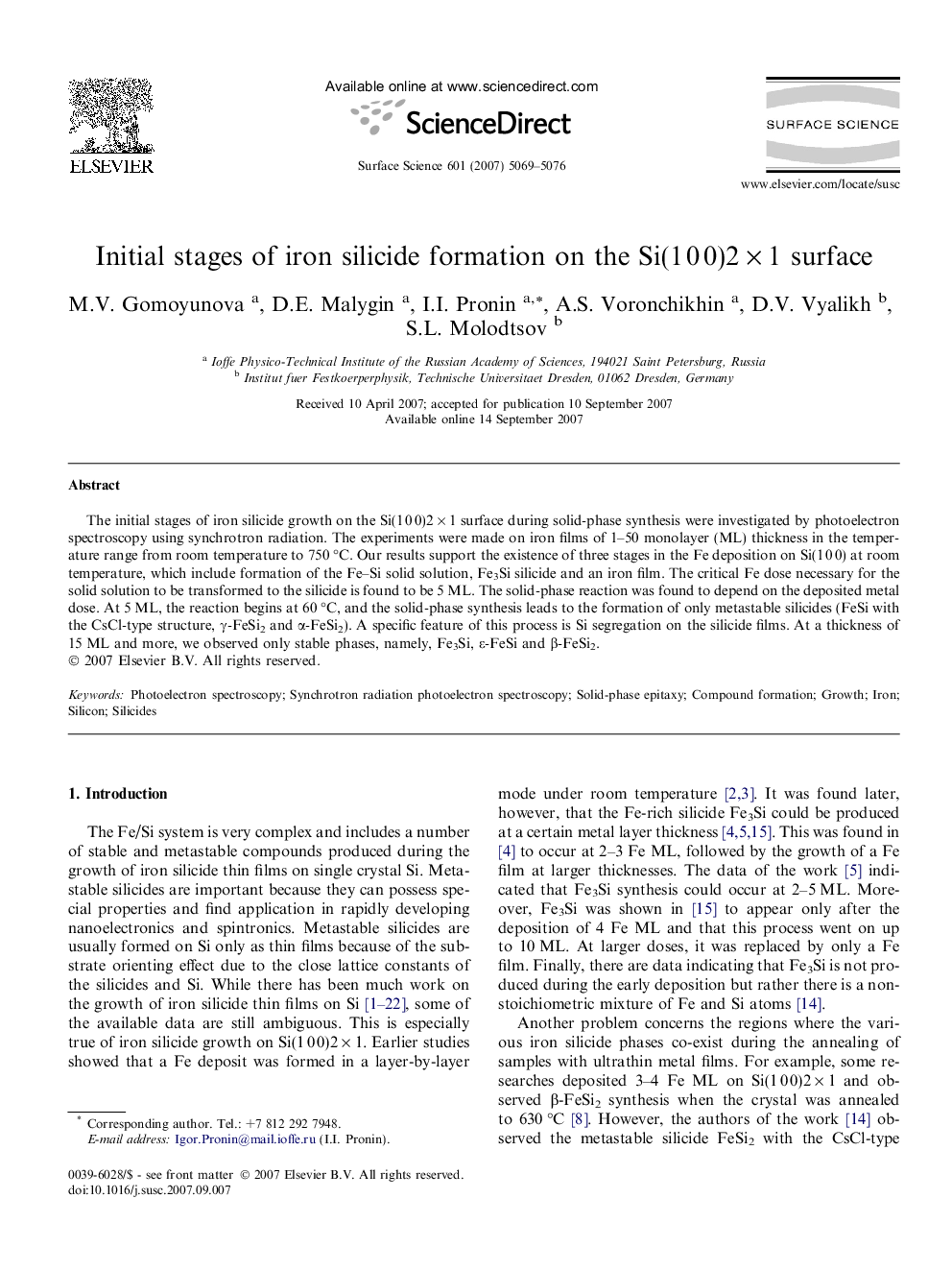| Article ID | Journal | Published Year | Pages | File Type |
|---|---|---|---|---|
| 5424951 | Surface Science | 2007 | 8 Pages |
The initial stages of iron silicide growth on the Si(1 0 0)2 Ã 1 surface during solid-phase synthesis were investigated by photoelectron spectroscopy using synchrotron radiation. The experiments were made on iron films of 1-50 monolayer (ML) thickness in the temperature range from room temperature to 750 °С. Our results support the existence of three stages in the Fe deposition on Si(1 0 0) at room temperature, which include formation of the Fe-Si solid solution, Fe3Si silicide and an iron film. The critical Fe dose necessary for the solid solution to be transformed to the silicide is found to be 5 ML. The solid-phase reaction was found to depend on the deposited metal dose. At 5 ML, the reaction begins at 60 °С, and the solid-phase synthesis leads to the formation of only metastable silicides (FeSi with the CsCl-type structure, γ-FeSi2 and α-FeSi2). A specific feature of this process is Si segregation on the silicide films. At a thickness of 15 ML and more, we observed only stable phases, namely, Fe3Si, ε-FeSi and β-FeSi2.
